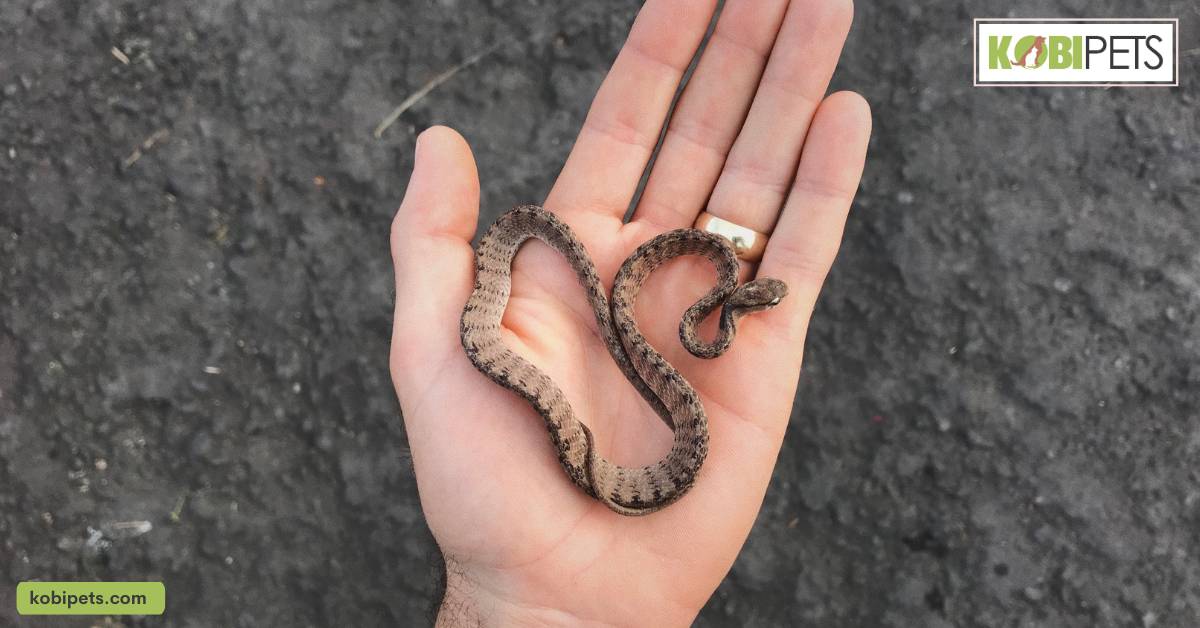
In order to determine the sex of a snake, you’ll need to be able to palpate its vent area. This involves gently feeling around the base of the tail for small bumps or spurs that indicate gender. If present, male snakes will have two spurs on either side of the vent while female snakes will only have one. Additionally, male snakes tend to be longer and thinner than females.
Are you curious about the sex of your pet snake? Do you want to make sure you’re taking care of your snake correctly, but don’t know how to determine its gender? This blog post will provide an overview of how to determine a snake’s sex.
We’ll discuss external and internal methods for determining a snake’s gender as well as safety considerations to keep in mind during the process. By the end of this post, you’ll feel confident in determining the sex of your snake and ensuring its safety while doing so.
Why It’s Important To Know The Gender Of Your Snake?
Knowing the gender of your snake is an important part of their care. Being able to accurately identify males from females helps people properly house and feed them, monitor their reproductive health, enable humane breeding practices, and address potential aggression or other unwanted behavior issues.
If you determine the sex of your snake correctly, you can avoid unnecessary or dangerous human-snake interactions and create an appropriate environment for a healthy pet. Females can be successfully housed together in same-sex pairs or groups, but unaltered males typically should not be kept with each other due to territorial aggression.
Gender identification can also allow owners to observe normal behaviors like courtship and egg-laying if they choose to breed their snakes responsibly. In order to identify one’s snake correctly, careful physical observation and research of relevant species-specific information are both key components to achieving successful results.

Ways How to Determine the Sex of a Snake
There are several ways to determine the sex of a snake. These include external physical examination techniques and internal examination techniques. It is important to handle snakes safely during the examination process, as some species may become defensive or stressed if handled incorrectly.
Venting and Probing
One method for doing this is called venting, which involves opening up the cloaca, or vent – an opening in the base of a snake’s body – and using tools such as forceps to inspect its reproductive organs.
Because this process is invasive and inadvisable if you’re not experienced enough to do it yourself, many experts recommend bringing your pet snake to a veterinarian who can help identify its gender without risking injury.
Other less invasive options for sex identification include probing; inserting a very thin rod into the vent in order to detect more well-defined anatomy. Both processes should only be done by trained professionals, so if you need help determining the sex of your pet snake make sure to book an appointment with a qualified vet or herpetologist.
How Does Venting Work?
Step 1: The snake should be carefully handled, usually with two gloved hands for support and safety. The tail should be gently pulled away from the body to expose the vent area.
Step 2: Using a pair of forceps, the professional will carefully open up the vent while paying close attention to any anatomical differences present in either sex (i.e. two spurs in males and one spur in females).
Step 3: A cotton swab can be used to carefully feel for any bumps or spurs along the vent that indicate gender.
Step 4: The professional may also look for a bulge indicative of eggs (in female snakes) or testes (in male snakes).
Step 5: The vent should be gently closed, and the snake should be handled around the body rather than by the tail afterward to reduce stress.
How Does Probing Work?
Step 1: Before handling your snake, make sure to wear gloves and provide a safe environment for the animal by gently restraining it with both hands.
Step 2: Insert a thin, lubricated rod (such as a toothpick) into the vent area of the snake.
Step 3: Move the probe around in small circles and pay close attention to any bumps or spurs you feel, if present.
Step 4: Male snakes will typically have two “bumps” (known as hemipenes) located on either side of the vent while female snakes only have one.
Step 5: Remove the probe from the snake and make sure to provide comfort and reassurance.

Hemipenal Bulges
According to recent scientific studies, hemipenal bulges are a reliable and accurate way of determining the sex of a snake. These bulges can be located near the tail of certain snakes and indicate that the snake is male.
The presence of hemipenal bulges is not universal for all species of snakes but can be an excellent indicator for determining the sex of common types such as rat snakes, corn snakes, and gopher snakes. Those interested in learning more about this method should research further into other less common species before attempting it.
How Do Hemipenal Bulges Work?
Step 1: Gently restrain the snake with both hands and make sure to wear gloves to protect yourself.
Step 2: Examine the tail area for any bumps or bulges.
Step 3: Male snakes will typically have two hemipenal bulges located near the vent area while female snakes may not have any at all.
Step 4: If hemipenal bulges are present, the snake is likely male.
Step 5: Provide reassurance and comfort to the snake after determining its sex.

Tail Lengths and Girths
The most common method is to look at tail lengths and girths. Generally speaking, male snakes will have longer tails with a narrower girth while female snakes will have shorter tails with a wider girth. It is also important to note that this works best in snakes that have matured, so if you’re not sure of your snake’s age, it may take some time before they reach maturity and this method can be used.
Keep in mind that these parameters alone do not guarantee you a proper identification; the shape of the head and visual inspection of vent openings are also essential to ensure correct sex identification. However, using multiple methods together will certainly provide an accurate answer.
How Do Tail Lengths and Girths Work?
Step 1: Carefully handle the snake with two gloved hands, making sure to provide support and safety.
Step 2: Measure the length of the tail as well as its girth (thickness).
Step 3: Generally speaking, male snakes will have longer tails with a narrower girth while female snakes will have shorter tails with a wider girth.
Step 4: Examine the head shape and vent openings to ensure correct sex identification, as tail length and girth may not guarantee an accurate answer on their own.
Step 5: Provide reassurance and comfort to the snake afterward.
Step 6: Repeat this process after some time has passed if you are unsure of the snake’s age.

Hormonal Testing
Hormonal testing is one of the most reliable ways to determine the sex of a snake. To conduct the test, researchers draw blood from a snake and analyze it for various hormones – namely those linked to testosterone or progesterone levels. With the results attained, you can then identify if your snake is a male or female.
It is important to remember that snakes, just like humans, may have various hormone production abnormalities which could skew the results of a hormonal test – making it even more crucial to cross-reference them with other sexual identification methods.
While other methods such as probing and vent-cloacal examination are available for sexing snakes, hormonal testing remains a much easier and cost-effective method for determining their gender.
How Do Hormonal Testing Work?
Step 1: You will need to draw blood from the snake and send it off for testing.
Step 2: The laboratory will analyze the blood sample for testosterone and progesterone levels, as these hormones are typically higher in male snakes than female ones.
Step 3: The results of the test can then be compared with other methods of gender identification to ensure an accurate result.
Step 4: If the hormone levels are high, then your snake is likely a male; if they are low, it is likely a female.
Step 5: Provide comfort and reassurance to the snake after testing has been completed.
Step 6: If there is any doubt about the accuracy of the results, repeat the test after some time has passed.

Ultrasound Imaging
Ultrasound imaging is becoming increasingly popular for determining the sex of pet and zoo snakes. Performing an ultrasound scan on a snake can provide accurate results as to its gender in as little as 5 minutes, with no need for surgery or risk of harm to the animal.
Ultrasounds are non-invasive and can be carried out painlessly even on smaller reptiles such as neonates. Regularly during their normal endoscopic or intestinal health examinations, veterinarians can also be using ultrasounds to verify the sex of your pet snake.
As result, it has become much easier and less stressful for owners to know whether they have a male or female snake, allowing them to plan ahead for any potential breeding. Thus, ultrasound imaging is proving to be a valuable tool when you want to quickly and safely identify the sex of your reptile companion.
How Does Ultrasound Imaging Work?
Step 1: Have your snake examined by a qualified veterinarian or herpetologist in order to determine whether they are suitable for an ultrasound scan.
Step 2: Place the snake on its back, using towels or blankets to help restrain it, and make sure that it is comfortable.
Step 3: Apply a conductive gel over the area of interest, usually the tail.
Step 4: Using a transducer, the technician will move it over the area in order to create an ultrasound image of the internal organs.
Step 5: Internal reproductive organs can be identified from this image, allowing for accurate gender identification without any risk of harm to the snake.
Step 6: The results of the scan can then be compared to other methods of gender identification.
Step 7: Provide reassurance and comfort to the snake after the scan has been completed.

In Conclusion
Determining the sex of your pet snake can be a daunting task. However, knowing their gender is an important part of their care and it can help you ensure they’re living in a safe environment and being cared for properly.
There are several methods to identify the gender of your snake, such as venting and probing, hemipenal bulges, tail lengths and girths, hormonal testing, and ultrasound imaging. Whatever method you choose to use for determining the sex of your snake, make sure to handle them safely and provide them with reassurance after the process is complete.






